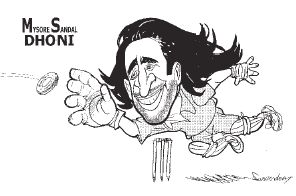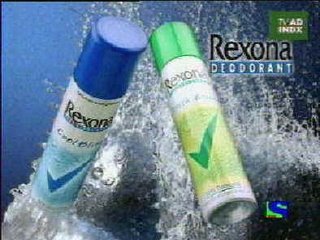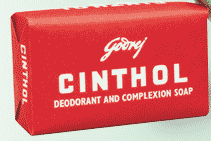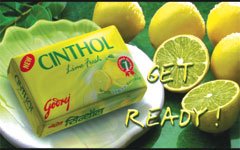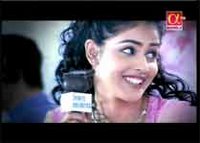Company: VVF Ltd
Agency:Orchard Advertising
Brand Count:231
Doy is an interesting brand because of two reasons , first is that its an example of a contract manufacturer going in for forward integration ,second it was a brand that tapped a new segment in the highly competitive Rs 5000 crore soap market.
VVF is a company that was established in 1939 metamorphosed into a largest  player in the Oleo resins and personal care manufacturer. The portfolio of VVF includes the Who is Who of the personal care industry ranging from J&J to Dettol.
player in the Oleo resins and personal care manufacturer. The portfolio of VVF includes the Who is Who of the personal care industry ranging from J&J to Dettol.
Doy was launched in 1998 as a soap targeted at the segment of kids aged 3-11 years. At that time , there was virtually no competition in the category with only a single brand "Kids" from J&J. Interestingly VVF was manufacturing KIDS for J&J.
VVF launched Doy in 1998. The brand was a premium soap positioned as kid's soap. The brand differentiated beautifully from other soaps using Form as its point of differentiation. In Marketing texts we have learned about differentiating based on Form and Doy is a classic example for that. The brand came in shape and form that catch the attention of Kids. According to the brand website, Doy has Five basic variants
Pink Princess player in the Oleo resins and personal care manufacturer. The portfolio of VVF includes the Who is Who of the personal care industry ranging from J&J to Dettol.
player in the Oleo resins and personal care manufacturer. The portfolio of VVF includes the Who is Who of the personal care industry ranging from J&J to Dettol.Doy was launched in 1998 as a soap targeted at the segment of kids aged 3-11 years. At that time , there was virtually no competition in the category with only a single brand "Kids" from J&J. Interestingly VVF was manufacturing KIDS for J&J.
VVF launched Doy in 1998. The brand was a premium soap positioned as kid's soap. The brand differentiated beautifully from other soaps using Form as its point of differentiation. In Marketing texts we have learned about differentiating based on Form and Doy is a classic example for that. The brand came in shape and form that catch the attention of Kids. According to the brand website, Doy has Five basic variants
Green Pixie
Samba Lion
Purple Mermaid
Mambo Elephant. Later the brand included more variants like
Lucky Duck
Bathman
Patch Eye
etc.
The unique shape of this soap made the brand very popular among the kids. Although the market share figures are not available, I feel that the brand had a reasonable run.
The bran d's success is very much attributable to the right segmentation. When we look at the soap segment, J&J's soap is primarily targeted at infants and kids aged till 3. After that in most households, the kids use the same soap as the elders .Here is the gap that the brand has identified.
d's success is very much attributable to the right segmentation. When we look at the soap segment, J&J's soap is primarily targeted at infants and kids aged till 3. After that in most households, the kids use the same soap as the elders .Here is the gap that the brand has identified.
Not only that the brand used its form as a differentiator, it had its positioning based on its product qualities. Doy uses Olive oil as a major ingredient. Olive oil has many properties that suits skin care. Doy is positioned as a soap that makes the skin healthy. The brand has a tagline " Clear Skin, Healthy Skin. Initially the brand was promoted using TVC's
The bran
 d's success is very much attributable to the right segmentation. When we look at the soap segment, J&J's soap is primarily targeted at infants and kids aged till 3. After that in most households, the kids use the same soap as the elders .Here is the gap that the brand has identified.
d's success is very much attributable to the right segmentation. When we look at the soap segment, J&J's soap is primarily targeted at infants and kids aged till 3. After that in most households, the kids use the same soap as the elders .Here is the gap that the brand has identified.Not only that the brand used its form as a differentiator, it had its positioning based on its product qualities. Doy uses Olive oil as a major ingredient. Olive oil has many properties that suits skin care. Doy is positioned as a soap that makes the skin healthy. The brand has a tagline " Clear Skin, Healthy Skin. Initially the brand was promoted using TVC's
Watch the TVC here: Princess
Then the brand did some unthinkable act. It extended itself to an adult brand with the brand name Doy Care. The company launched Doy Care Creme : a cream based premium soap targeted at young women. The brand was aiming at the premium segment of the soap market. The brand also had a unique shape like the kids variants. Later came another variant aimed at the young girl's segment Doy Care Aloevera.
Watch the TVC here : Aloevera In my exp erience as a consumer, the aloevera variant was a horrible soap ( I know its not meant for me...) because of its fragrance or lack of it....
erience as a consumer, the aloevera variant was a horrible soap ( I know its not meant for me...) because of its fragrance or lack of it....
As an academic , I feel that extending a Kids brand into adults was somekind of a suicide mission on the part of the brand manager. It is going to confuse both the consumers: Kids and young girls.
Regarding the parent brand Doy, the company is not at all aggressive in the market. Except for some sporadic ad campaigns, the brand is adopting a laid back attitude. There are news reports of many below the line promotions for this brand, but compared to its peers , the share of voice is very low.
 erience as a consumer, the aloevera variant was a horrible soap ( I know its not meant for me...) because of its fragrance or lack of it....
erience as a consumer, the aloevera variant was a horrible soap ( I know its not meant for me...) because of its fragrance or lack of it....As an academic , I feel that extending a Kids brand into adults was somekind of a suicide mission on the part of the brand manager. It is going to confuse both the consumers: Kids and young girls.
Regarding the parent brand Doy, the company is not at all aggressive in the market. Except for some sporadic ad campaigns, the brand is adopting a laid back attitude. There are news reports of many below the line promotions for this brand, but compared to its peers , the share of voice is very low.
With lot of competitors viewing this segment seriously, Doy better start getting more active. One comforting fact for Doy was that J&J 's venture into the Kid's segment with the brand KIDS was a failure despite its heavy campaigning and the backing of the equity of J&J.Now we can see that Johnson & Johnson is now communicating to the mothers that its baby soap can be used for Kids also. Pears is another strong brand eying this segment. The brand had a reasonable success in the TG also.
I personally feel that Doy failed to take advantage of the opportunity it had to create and own the kid segment. Primarily because of the lack of heavy investment in brand building.source:agencyfaqs,financialexpress,doycare website



















